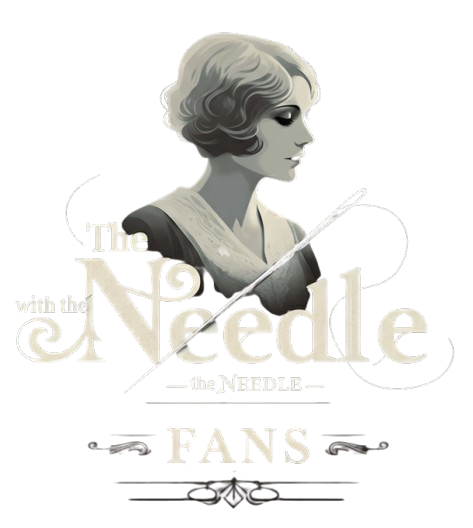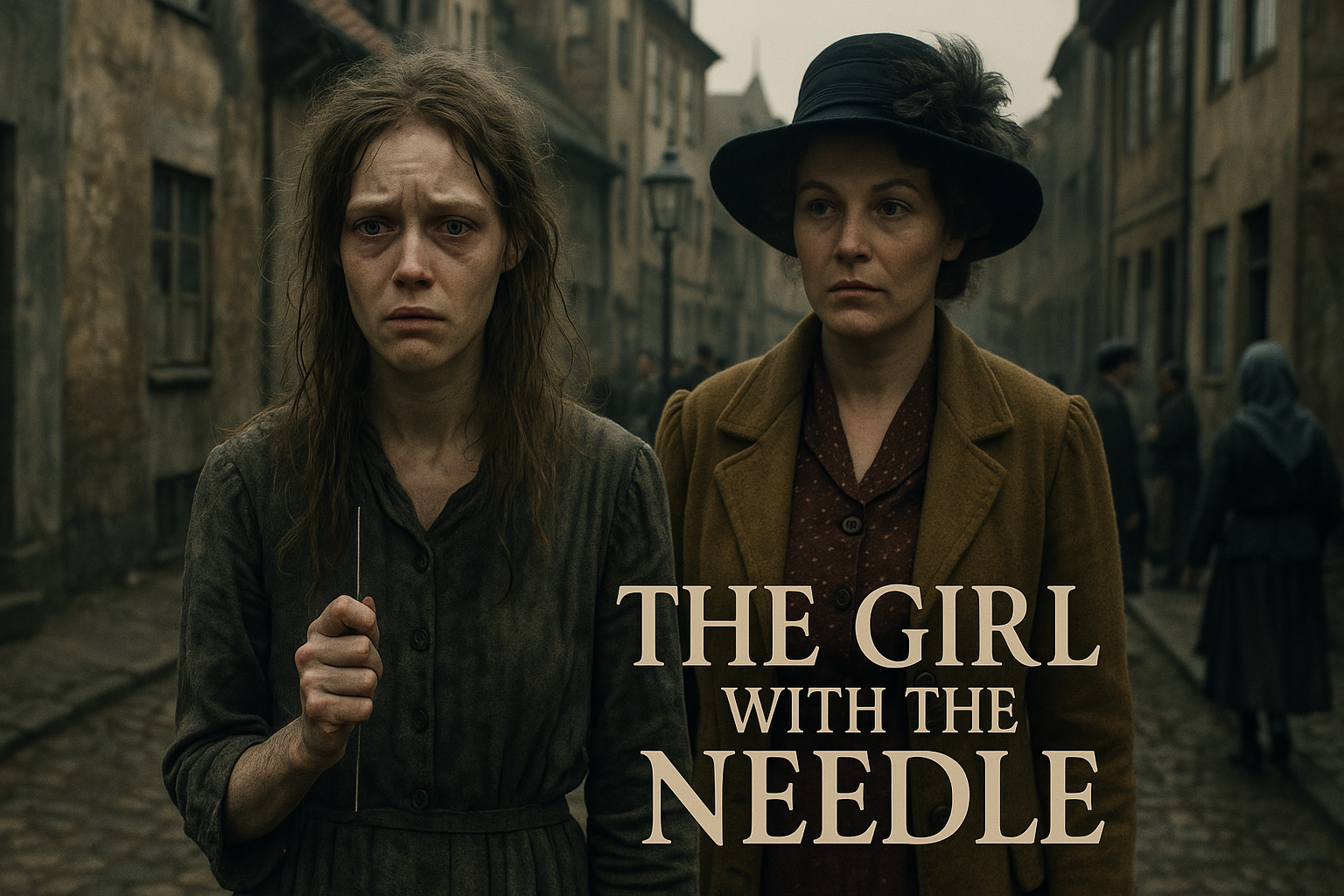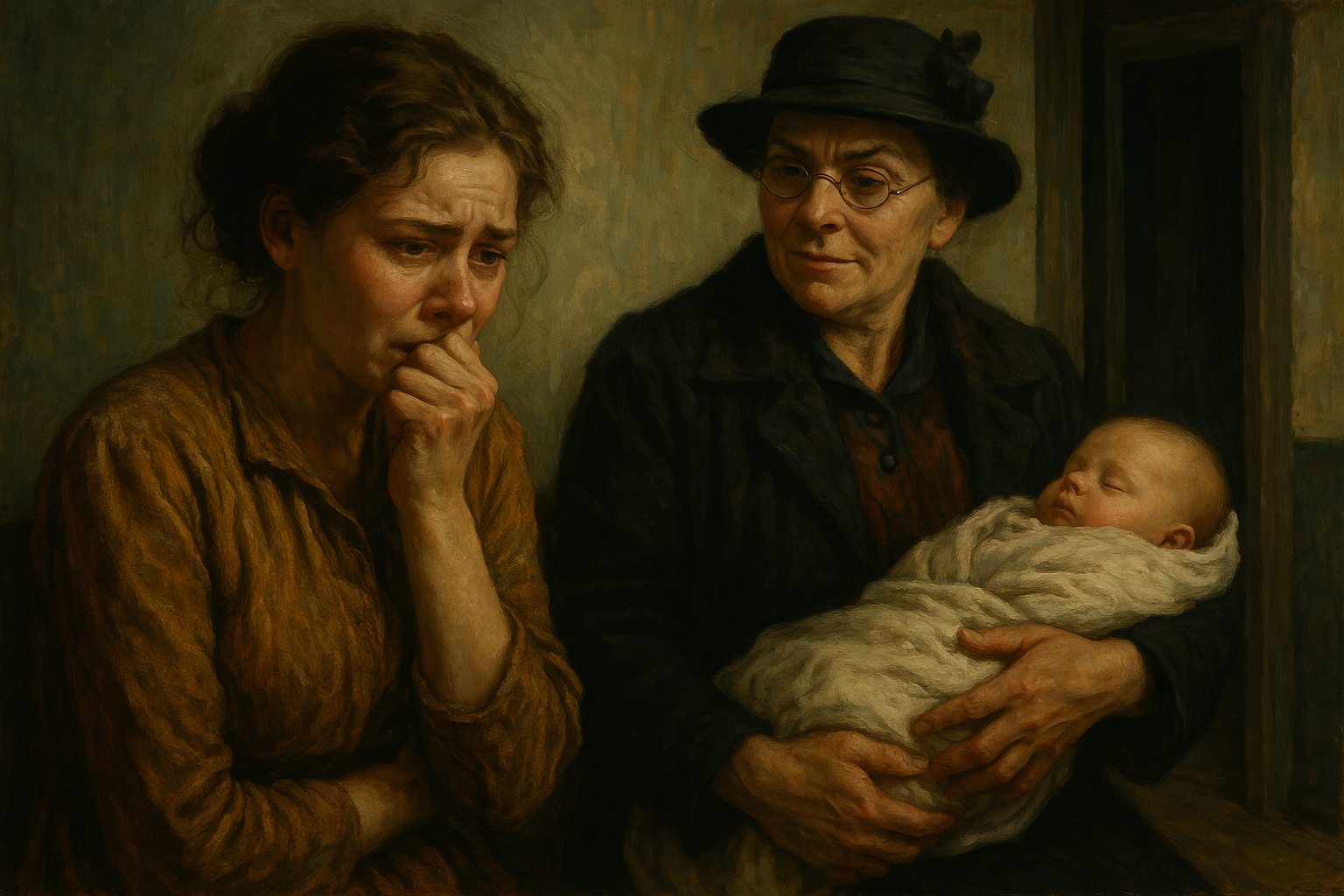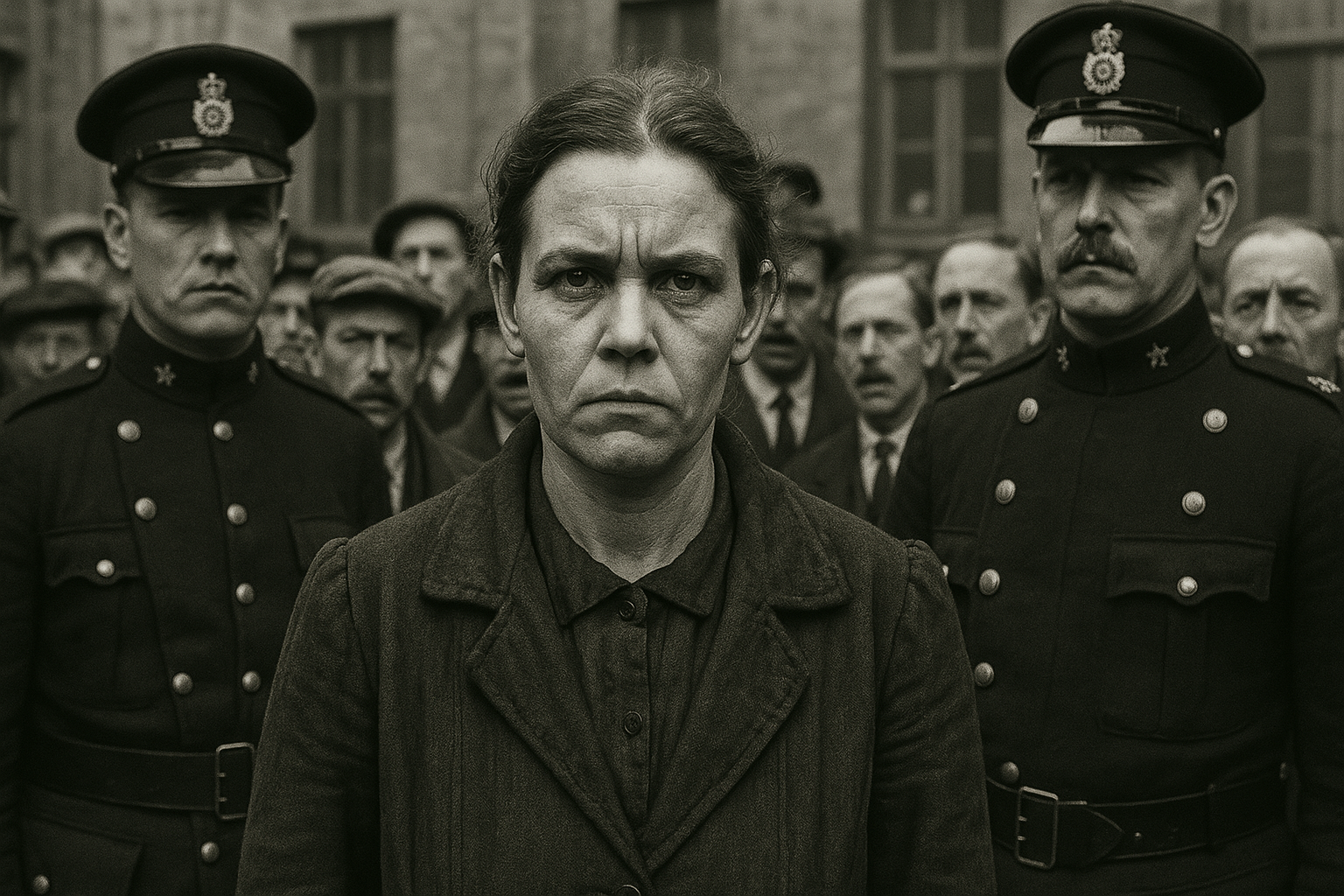Unraveling the Horror: The Girl with the Needle – A Cinematic Journey Through Trauma, Ethics, and Truth
The Unravel the Story campaign explains how The Girl with the Needle (2024) creates its remarkable worth by uniting dark horror aspects with factual unsettling material. The film director, Magnus von Horn, walks audiences through Karoline's essential experience interacting with child murderer Dagmar Overbye. The motion picture investigates murder and manipulation at face value. Yet, it reveals how societal instability combined with institutional defects and gender dynamics affect society while exploring such themes.
Throughout the nocturnal backdrop of 1919 Copenhagen, The Girl with the Needle unfolds as a story beyond basic crime along with horror. The film breaks down impaired systems while studying mothers in extreme situations and their moral value survival conflicts. The blog examines all essential themes combined with historical content and novel storytelling approaches in the film. The analysis verifies how The Girl with the Needle utilizes contemporary social ideas to examine the protagonist's mental and psychological states.
The article establishes how The Girl with the Needle produces an intense, gripping effect that audience members and critics find appealing as it delivers depth to its story's emotional content. The Girl with the Needle presents audiences with a critical film masterpiece that surpasses conventional genre offerings.
The Film Intensifies When Karoline Faces a Critical Point
The story of Karoline unfolds through Copenhagen society conditions from 1919 during her lower-class lover's desertion .agmar Overbye presents herself to Karoline as a candy shop owner who provides shelter, but her motives prove evil. Dagmar gives herself the misleading role of assisting unmarried mothers through baby adoptions while simultaneously murdering all her adopted children.
Karoline learns about Dagmar's true crimes, which launches her character into a severe psychological and moral dilemma. Her motherly nature develops so strongly that she will face the terrifying reality of what Dagmar does. Karoline faces an internal conflict between keeping her secret for survival and her developing ethical responsibility to prevent Dagmar from harming any more children.
Ethical and Psychological Analysis of Karoline and Dagmar
The development of Karoline's character extends from her experiences of weakness through her ascension to strength as she learns about herself. The movie first shows Karoline as helpless, evolving this depiction into a dominant personality throughout her psychological transformation. The initial stage of their relationship demonstrated dependency, yet Dagmar transformed into a maternal figure, and Karoline fulfilled her maternal personality. The decision to defend her unborn child leads Karoline to take complicated steps that test her moral values while transforming her survival into an ethical conflict.
The journey of her character demonstrates how trauma shapes people while surviving in a culture dominated by men. Karoline discards Dagmar's control through her newfound independence, showing her transformation from a passive individual to an independent woman. Throughout the story, the audience faces an essential question about survival versus ethical preservation while questioning the justification behind all actions to stay alive.
Dagmar displays characteristics of a non-typical villainous figure. Through her behavior sequence, the character shows a disturbing mental state of affairs. Psychological signs of maternal delusion and narcissism, along with trauma, will make viewers see Dagmar as a mostly tragic figure instead of one who is entirely evil. The psychological pressure that drives Dagmar toward control possesses her. Another clever reveal of the film shows that Dagmar became evil through the undesired effects of societal breakdowns and her deprived circumstances.
Because of the two main female characters, audience members must consider the thin boundary between mercy and murder and compassion and cruelty. The film displays ethical confusion by showing Dagmar performing caregiving and murdering responsibilities, which points to desperate situations leading people to act beyond essential evil conduct.
Real History Behind the Film: Dagmar Overbye
Historical reality inspired the production of The Girl with the Needle. Dagmar Overbye is a serial killing offender who originated from Denmark during the initial years of the twentieth century. Unwed mothers became her targets as she posed as an adoptive option until murdering the babies in their care. The Danish nation reacted with horror to the case, which ultimately triggered extensive reforms of child protection laws while it questioned government responsibilities toward defenseless citizens.
By blending factual history with fiction, the film demonstrates how inadequate institutional care allows evil deeds to occur. The production of a fictional plot does not downplay the film's terror because it illustrates how protective systems collapse into devastating outcomes.
Through historical context storytelling filmmakers display the tragic situation of institutional government agencies who neglected protection of vulnerable citizens. Through historical details the film attains deeper emotional impact which surpasses its primary narrative.
Cinematic Techniques: Monochrome, Sound Design, and Musical Score
Monochrome expressionist aesthetics of The Girl with the Needle produce everlasting visuals which elevate the cinematic quality of the film. Light and shadow relationships in the picture carry more than visual significance because they carry essential symbolic meanings. Through their bleak images and colorless presentation, The Girl with the Needle expresses the moral difficulties of the main characters because viewers must focus on the emotional aspects of their decisions.
Michał Dymek utilizes his cinematographic techniques to let shadows govern multiple scenes, thus augmenting the concealed nature and unrelenting horror that runs throughout the film. The director employed this choice to boost the gothic feel and demonstrate the psychological strain that develops from start to finish.
The sound design and musical score developed by Frederikke Hoffmeier both contribute to increasing the psychological force of the film. Through simple, eerie scores that mix industrial sounds with ambient dread, the atmosphere combines both beautiful and uncomfortable elements. The limited music scores in the film develop tension organically, which increases the audience's emotional involvement with the characters' significant decisions. The acoustic effects within the movie merge with visuals to pull the audience deeply into the frightening atmosphere that forms the story world.
Symbolism and Social Relevance
A knitting needle symbolizes making babies and ending lives in The Girl with the Needle. Through the needle symbol, Dagmar acquires domination over people, and the object shows Karoline attempting to break free from her constraints. The Needle's meaning extends beyond Dagmar's suppression after Karoline recognizes her actual situation because it becomes a tool for Karoline to take command over her destiny.
The candy shop operates as one of the primary symbols throughout the film. The facility's innocent appearance presents a deceptive front that conceals different horrific events in the public eye. The symbolic shop elements demonstrate how deep, disturbing secrets can hide beneath everyday situations and institutions. The shop looks attractive from the outside, yet it conceals essential darkness, which functions as the film's important message.
Throughout the storyline, the film examines reproductive choices, the societal expectations of mothers, and the traumatic outcomes of parental rejection. The thematic contents in the story hold significant importance to modern society because recent U.S. abortion legislation changes have initiated conversations about reproductive choices. Through storytelling, The Girl with the Needle showcases systematic social structures that badly abuse women following their inability to support or care for individuals properly.
How Audiences Have Reacted
Studio and viewer response to The Girl with the Needle has been strong because the film masterfully combines storytelling methods to generate powerful emotional effects. According to Rotten Tomatoes and IMDb reviews, the movie received stellar assessments because of its excellent storytelling, deep narrative substance, and mental stimulation. Audience members have used words like "beautifully disturbing" and "unforgettable" to describe this film because of its complex emotions and immovable portrayals by the performers.
Social media users intensely discuss the psychological themes and emotional impact of The Girl with the Needle, which continue to affect viewers well after watching the film. Multiple critics evaluate the film by comparing it to tense psychological dramas such as The White Ribbon and Beanpole, which both explore societal neglect and moral ambiguity.
Why This Film Matters Today?
In the post-Roe v. The Girl with the Needle, the significance increased following the Roe v. Wade decision. Through its storyline, the film details how denying women freedom results in severe effects, together with society's delayed response to protect children and women, both leading to tragic results. The film's storyline about oppression and abuse of power mirrors modern discussions about women's right to birth control.
The film illustrates how protective systems designed to safeguard vulnerable populations can effectively cause them harm. A core theme developed during this film becomes relevant recently because it demonstrates how disregarding people leads to devastating outcomes.
The Future of Feminist Horror
The Girl with the Needle creates an essential benchmark in feminist horror cinema. It joins The Babadook and Saint Maud as films that push genre boundaries to seek out hidden psychological and societal layers within horror elements. The filmmakers employ horror elements not to create sensations but to study the processes of surviving trauma and explore public failures across societies. This story makes us confront the demons that human institutions create because they continue to dispense inadequate support to those they should protect.
The Girl with the Needle will build its legacy as frightening in its storyline and profound in its exploration of intricate societal matters from a mental health perspective. The film generates enduring concerns regarding ethical principles and questions about staying alive and understanding the nature of our human environment, which remain vivid even when the credits disappear.










